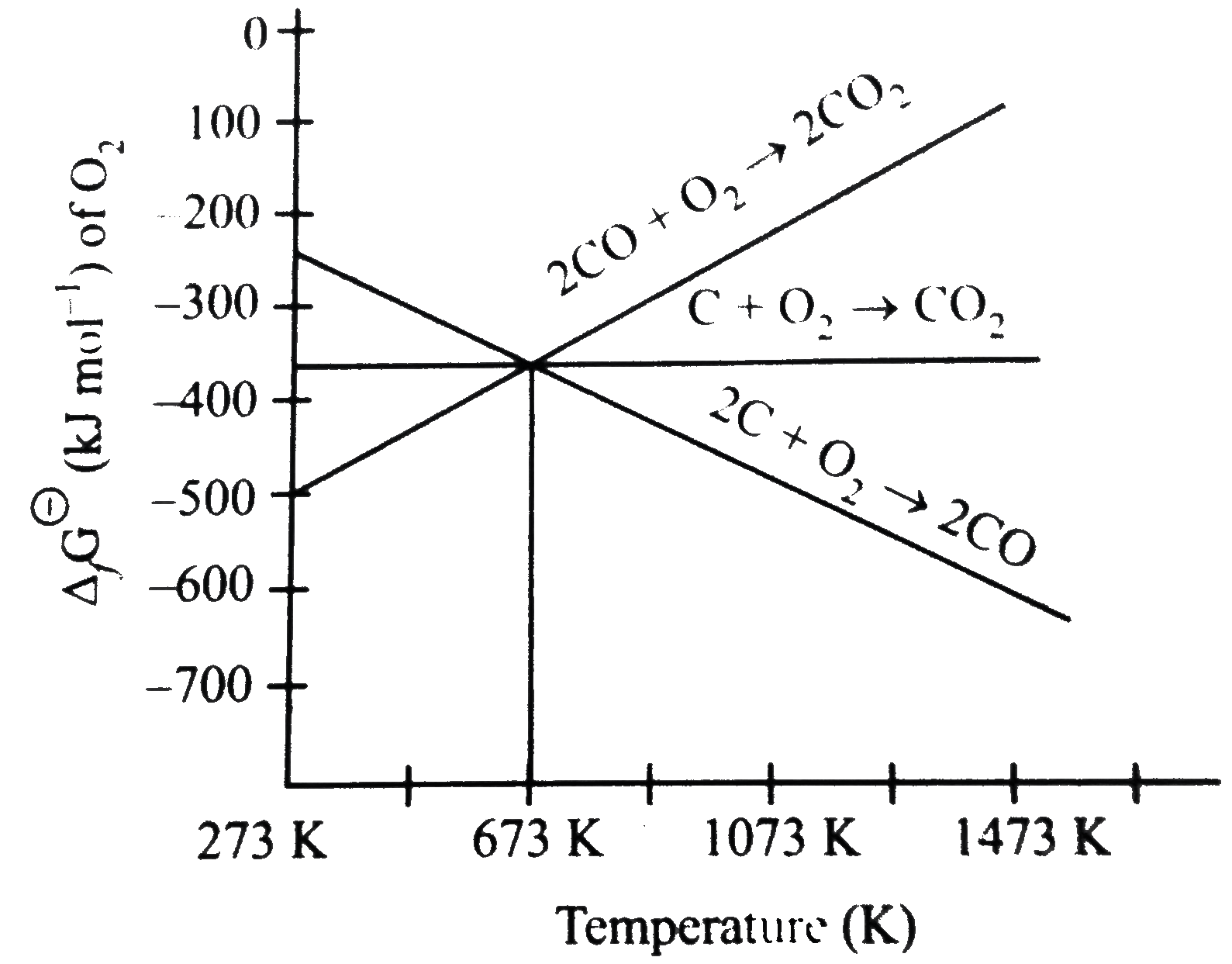Out of C and CO, which is a better reducing agent at 673K?
Video Solution
Text Solution

When carbon reacts with dioxygen two reactions are possible.
The CO thus produced can also react with O2 to form CO2
2COg+O2→2CO2 …(iii)
In the first reaction the volume of CO2 produced is the same as that of O2 used hence △S is very small and △fGɵ does not change with temperature. Thus the graph of △fGɵ against T is almost horizontal.
The second reaction produces two volumes of CO for every one volume of O2 used. Thus △S is positive and hence △fGɵ becomes increasingly negative as the temperature increases. Consequently, C,CO line on the ellingham diagram slopes downwards . The third reaction produces two volumes of CO2 for every three volumes of reactants used. Thus △S is -ve and hence △fGɵ becomes incresingly +ve as the temperature increases consequently, CO,CO2 line on the ellingham diagram slopes upwards The three lines cross at 673K. Below this temperature formation of CO from C is energetically more favourable. In ther words, below 673K, both C and CO can act as reducing agents but since CO can be more easily oxidised to CO2 than C to CO2, therefore, below 673K. CO is a more effective reducing agent than C. However, above 673K, CO is more stable and hence its oxidation to CO2 is less rapid than that of C to CO2 therefore, above 673K C is better reducing agent than CO.
|
Topper's Solved these Questions
- APPENDIX INORGANIC VOLUME 2BOOK - CENGAGE CHEMISTRYCHAPTER - APPENDIX INORGANIC VOLUME 2EXERCISE - Short Answer Type
179 Videos
- APPENDIX INORGANIC VOLUME 2BOOK - CENGAGE CHEMISTRYCHAPTER - APPENDIX INORGANIC VOLUME 2EXERCISE - Short Answer Type
179 Videos
- AMINESBOOK - CENGAGE CHEMISTRYCHAPTER - AMINESEXERCISE - QUESTION BANK
1 Video
- AROMATIC COMPOUNDS AND ALKYL AND ARYL HALIDES BOOK - CENGAGE CHEMISTRYCHAPTER - AROMATIC COMPOUNDS AND ALKYL AND ARYL HALIDES EXERCISE - Archives Subjective
18 Videos
Similar Questions
Knowledge Check
Out of C and CO, which is better reducing agent for ZnO?
ACarbonBCOCBoth of theseDNone of theseOut of C and CO, which is better reducing agent for ZnO?
ACarbonBCOCBoth of theseDNone of these
Out of C and CO, which is a better reducing agent at lower temperature range in the blast furnace to extract iron from the oxide ore?
View SolutionOut of C and CO, which is a better reducing agent at the lower temperature range in the blast furnace to extract iron from the oxide ore?
View Solution(a) Which solution is used for the leaching of silver metal in the presence of air in the metallurgy of silver ?
(b) Out of C and CO, which is a better reducing agent at the lower temperature rangein the blast furnace to extract iron form the oxide ore ?
View SolutionOut of C and CO, which is a better reducing agent for ZnO?
View SolutionOut of C and CO, which is a better reducing agent at 673K?
View SolutionOut of C and CO which is better reducing agentfor ZnO ?
View Solution